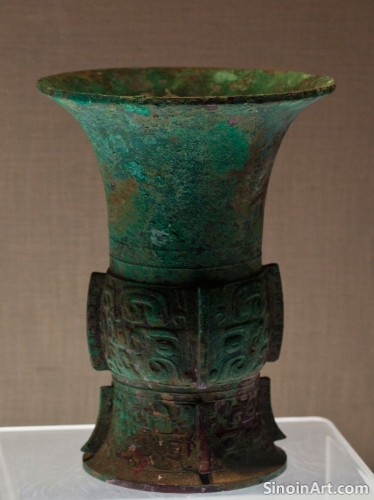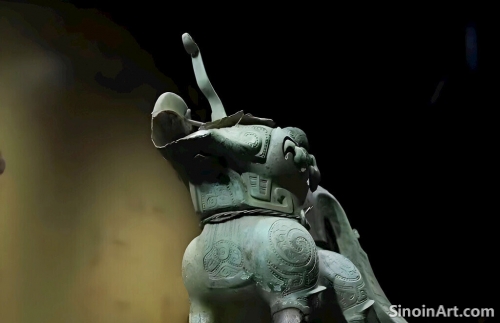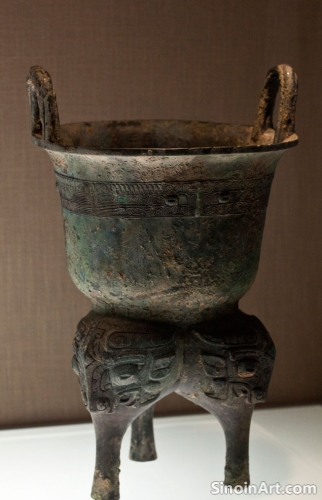Bronze Ware and the Representation of Power in Ancient Chinese Royal Tombs: Scale, Detail, and Symbolism
|
The placement of bronze ware in ancient Chinese royal tombs was a carefully orchestrated display of power and authority, designed to convey both the immense wealth and status of the deceased and also their continued influence in the afterlife. These artifacts help to illuminate both the social and political importance of the ruling class. The careful use and placement of these objects helped to emphasize and underscore the power and legacy of the deceased.  The scale and number of bronze objects found in royal tombs was often immense, with large ritual vessels, sets of musical instruments, and vast collections of weaponry all underscoring the wealth and influence of the ruling families. The quality and quantity of these artifacts helps to illustrate the vast power and resources available to the ruling class. The impressive display of wealth and power helped to further solidify their social position.  The intricate details and decorations on these bronze objects, often including symbolic motifs and lengthy inscriptions, further emphasized the importance of the deceased, their accomplishments, and their family's connections to both the earthly and celestial realms. The use of symbolic imagery and carefully chosen designs helped to underscore the spiritual and political power of the ruling class. The use of these symbols helped to create a lasting representation of the status and importance of the deceased.  The use of bronze, a valuable and durable material, also helped to convey a sense of permanence and continuity, suggesting that the power and authority of the ruling family would endure forever. The creation of objects from bronze helped to create a lasting record of the lives, beliefs, and political power of the departed. |
Tag : bronze royal tombs, Chinese power, burial displays, elite artifacts, status symbols
Related information
- The Use of Bronze in Ancient Chinese Household Items: Beyond Ritual and Warfare
- The Preservation of Bronze Artifacts: Understanding the Chemistry of Corrosion and Deterioration
- The Craftsmanship Behind Chinese Bronze Ware: Techniques and Methods
- Bronze Ware and the Development of Ancient Chinese Mathematics: Measurement and Calculation
- The Symbolic Significance of Bronze in Ancient Chinese Power Structures: Ritual, Authority, and Legitimacy
This article explores the use of bronze in ancient Chinese household items, highlighting objects like mirrors, lamps, braziers, tools, and containers, and demonstrating how bronze enriched everyday life beyond ritual and warfare.
This article explores the chemistry of bronze corrosion and deterioration, highlighting the scientific principles behind conservation efforts, and the methods and techniques used to stabilize and preserve these artifacts for future generations.
This article explores the craftsmanship behind Chinese bronze ware, detailing the lost-wax casting method, the composition of bronze alloys, and the intricate techniques used to create the detailed designs, highlighting the technical mastery of ancient bronze workers.
This article explores the use of bronze in ancient Chinese mathematics, highlighting its role in creating measuring instruments, illustrating mathematical principles, and revealing the connections between bronze, technology, and mathematical understanding.
This article explores the symbolic significance of bronze in ancient Chinese power structures, highlighting its role in ritual practices, its symbolism of authority and legitimacy, and its use by rulers to consolidate political control.